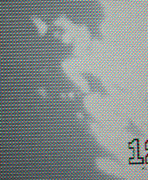
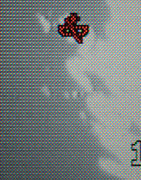
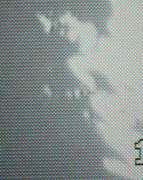
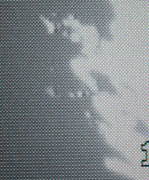
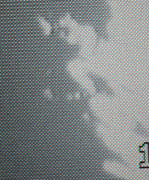
These tests described below apply to the old observatory, the 8x8x20ft steel shipping container with no separation between computers/observers and the telescope and hence problems with heat from computers/observers migrating upward through the dome slit and across the telescope light path. This situation has been resolved by the design and construction of the new observatory in 2008.
Old Observatory - Air Turbulence ("seeing", in astro lingo) Quantified
Our 12" LX200 with CCD with the f/6.3 reducer produces blurry stars with PSF's of about 4-5 arc sec diameter at best. I believe the major source of our bad seeing is the fact that we're in a canyon which acts as a river bottom of cool air. The boundary layer between this mini-inversion layer will scramble the incoming wave fronts. This we can't do anything about. The second source I believe may be the fact that the control room is not isolated from the telescope dome. Thus, warm air from the two computers and 3 monitors will chimney up through the open slit, right in front of the telescope aperature. In late 2003 I did some tests: Below I used our Canon ZR45mc camcorder to capture footage both with and without the computers and monitors (the main heat sources) on. Seeing varies moment to moment, so I have posted 4-5 frames from each period, to give a feel for the average seeing.
No Heat Sources: This first set was done after having the telescope on for well over an hour, but no computers on. The telescope temperature and focus should be completely stable and no adjustments were done to the telescope focus after beginning this test. No Photoshop adjustments to levels were done below; only cropping and .jpg'ing to the same compression quality.





With Heat Sources On: The next set below was taken after turning on both Spock and Sulu and their monitors, and also the monitor connected to the PC23c on the finderscope. I left these heat sources on for 15 minutes before capturing a few minutes of footage, from which the frames below are typical.
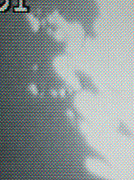

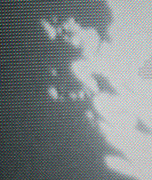
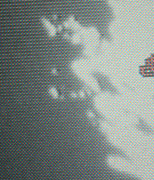
With Heat Sources Turned Back Off. The final set below was taken after turning the computers and monitors back off and waiting another 15 minutes for cool-down to remove the residual heat.
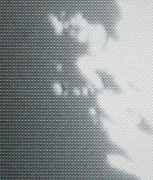
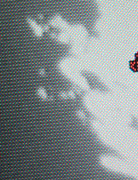
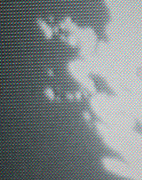
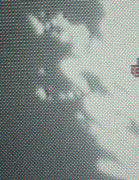
My strong impression while watching the camcorder both running and paused, was that the no-heat images were significantly sharper than the computers-on images. But, that doesn't seem to be too obvious in these captures here. The second set with heat sources turned off show seeing not much better than the heat-on pictures. It's possible there was some secular change in the seeing that had nothing to do with the local heating tested here, however my impression that if so, it was not very significant.
Now, these are snapshots off the paused camcorder screen, taken with the Dimage 5 digital camera. They capture the high-frequency component of bad seeing which is due to small scale convection currents. These are the currents most likely generated by the local sources of heat and moving over the open dome slit. There was a significant low-frequency component to the poor seeing this night. It showed itself as the whole camcorder frame moving about as a unit, with a typical time scale of a few tenths of a second. This component will provide just as much or even more of the blurring seen on our time exposures of deep sky objects with the ST7. However, if this low frequency component is significant and on-going and due to the convection currents moving down our canyon, we may want to consider getting the AO-8 adaptive optics unit from SBIG.